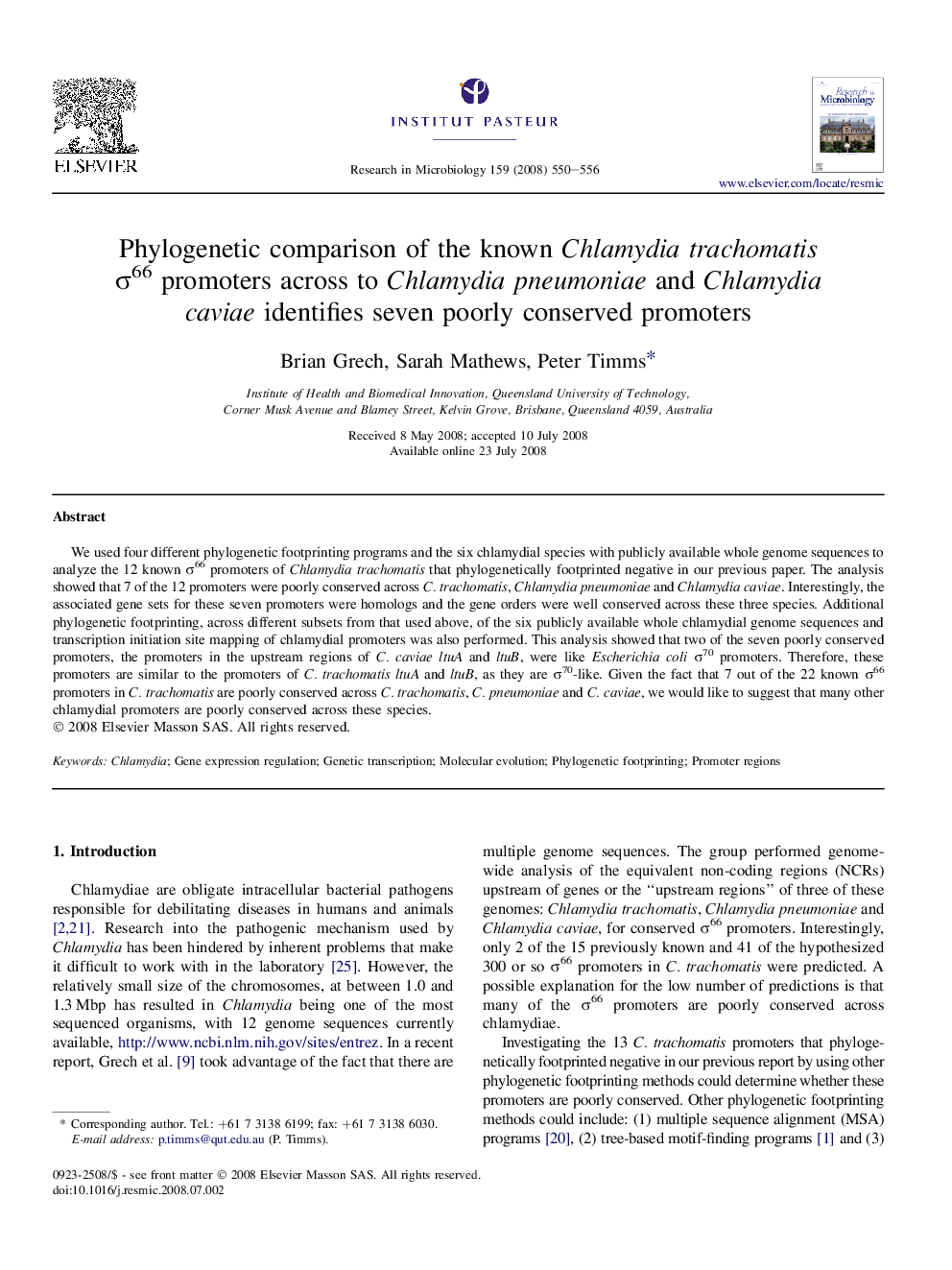| Article ID | Journal | Published Year | Pages | File Type |
|---|---|---|---|---|
| 4359493 | Research in Microbiology | 2008 | 7 Pages |
Abstract
We used four different phylogenetic footprinting programs and the six chlamydial species with publicly available whole genome sequences to analyze the 12 known Ï66 promoters of Chlamydia trachomatis that phylogenetically footprinted negative in our previous paper. The analysis showed that 7 of the 12 promoters were poorly conserved across C. trachomatis, Chlamydia pneumoniae and Chlamydia caviae. Interestingly, the associated gene sets for these seven promoters were homologs and the gene orders were well conserved across these three species. Additional phylogenetic footprinting, across different subsets from that used above, of the six publicly available whole chlamydial genome sequences and transcription initiation site mapping of chlamydial promoters was also performed. This analysis showed that two of the seven poorly conserved promoters, the promoters in the upstream regions of C. caviae ltuA and ltuB, were like Escherichia coli Ï70 promoters. Therefore, these promoters are similar to the promoters of C. trachomatis ltuA and ltuB, as they are Ï70-like. Given the fact that 7 out of the 22 known Ï66 promoters in C. trachomatis are poorly conserved across C. trachomatis, C. pneumoniae and C. caviae, we would like to suggest that many other chlamydial promoters are poorly conserved across these species.
Keywords
Related Topics
Life Sciences
Immunology and Microbiology
Applied Microbiology and Biotechnology
Authors
Brian Grech, Sarah Mathews, Peter Timms,
